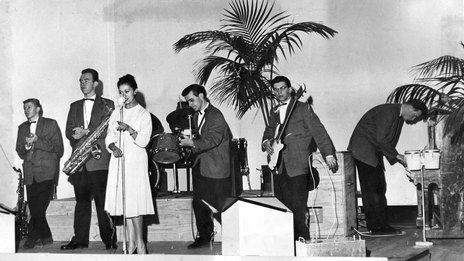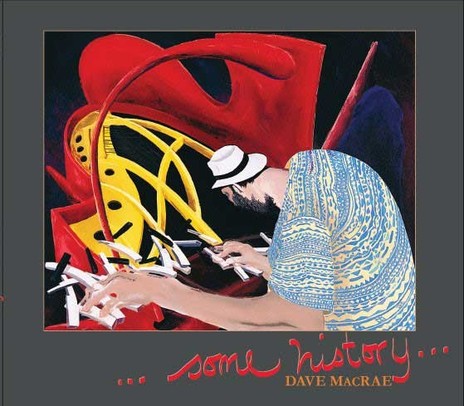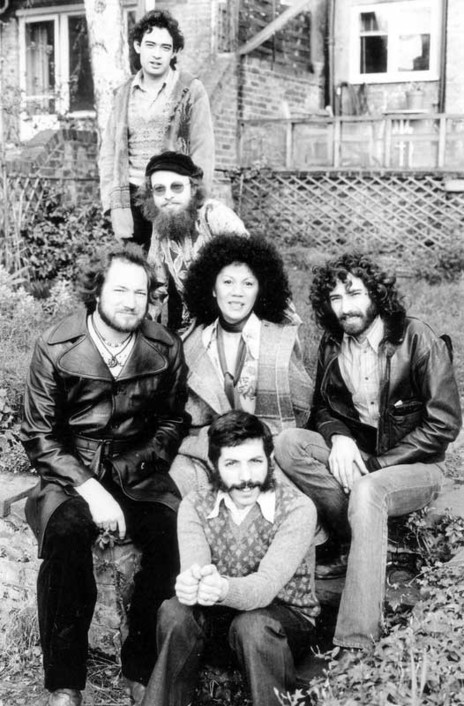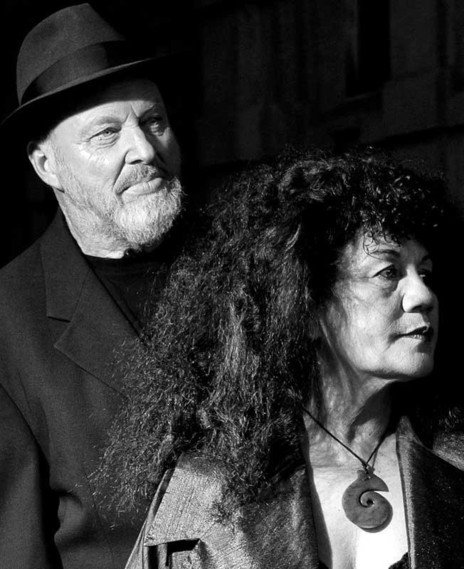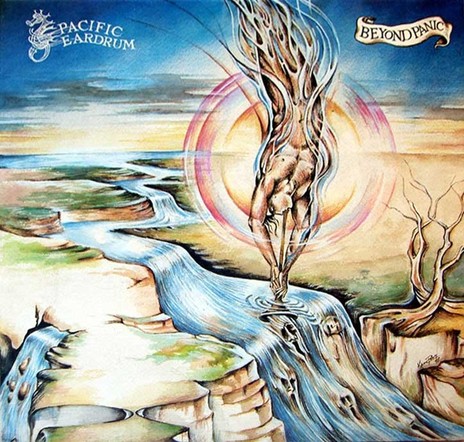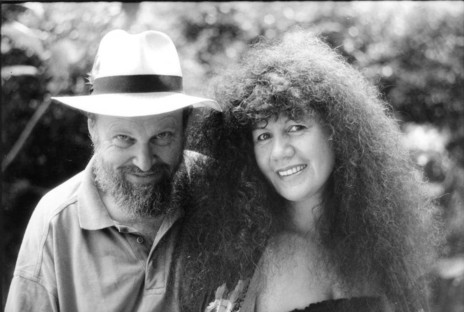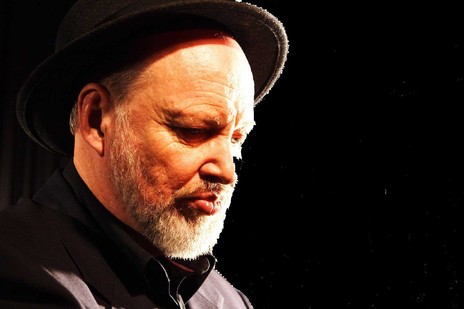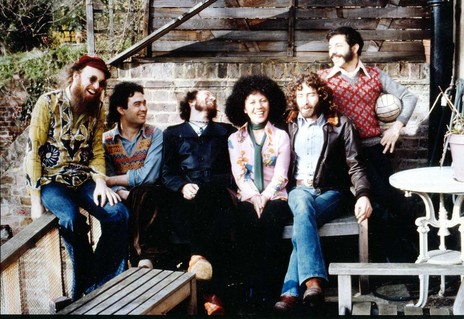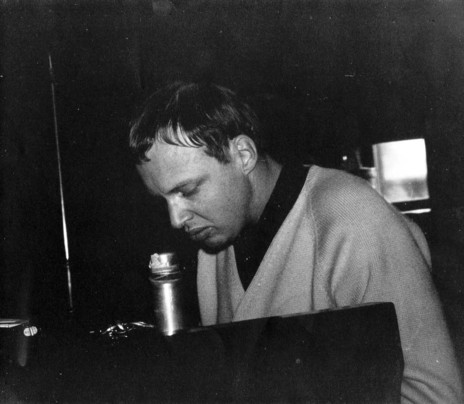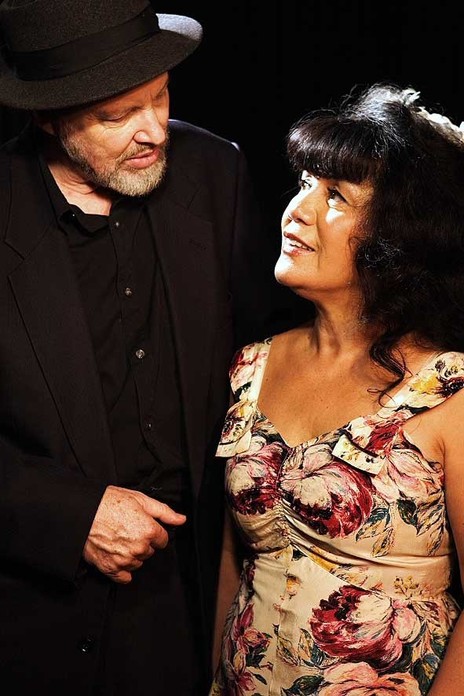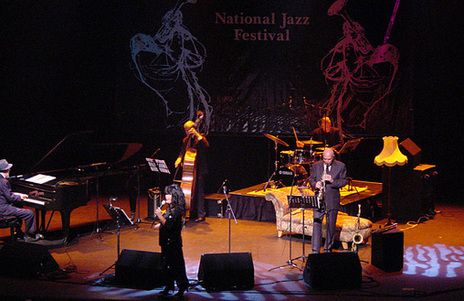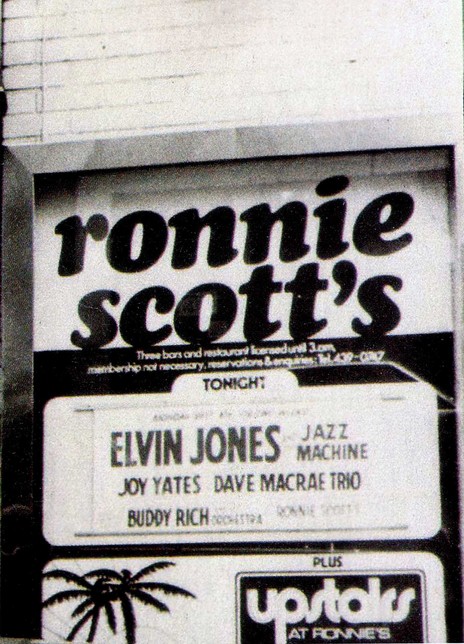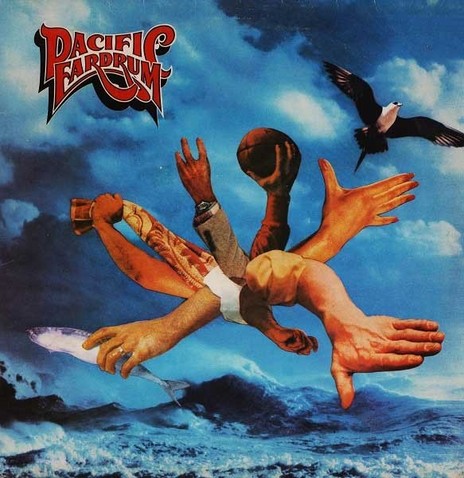MacRae, described as “an emotive performer with outstanding jazz credentials”, was a vital part of what came to be known as “the Canterbury scene”, a group of musicians who shared time in a raft of experimental groups including Matching Mole, Soft Machine, and WMWM (Windo-MacRae-Wyatt-Matthewson) playing progressive art rock, jazz and avant-garde music.
In 1960 Dave MacRae and another Aucklander, saxophone player Brian Smith, jumped on a ship to expand their musical horizons.
Chasing the rumour that there were more opportunities in Australia, in 1960 Dave MacRae and another Aucklander, saxophonist Brian Smith, jumped on a ship to expand their musical horizons.
It was a lot harder than either expected, not having any direct connections into the music scene. The two worked at a hotel in Surfer’s Paradise with fellow New Zealander Bob Paris on guitar before MacRae headed to Sydney determined to improve his musical knowledge by studying at the New South Wales Conservatorium of Music.
He scored a role as arranger for Festival Records, which was at the time making cover versions of mostly American hits for local artists.
“The originals were first heard on radio transmissions from the USA, copied, then as quickly as possible recorded by a local artist with records in the local stores and on radio weeks before the originals were available.”
This, says MacRae, proved good business for the locals. It was a great chance for him to learn about string arrangements, songwriting and other aspects of the recording industry, largely thanks to producer Pat Aulton.
Jazz scene staple
MacRae cemented himself as an integral part of the jazz scene through his performances with Australian jazz musicians including Bernie McGann, John Pochee, Graeme Lyall, Don Burrows, John Sangster and Bob Barnard.
Having teamed up with singer Joy Yates, the two headed to Los Angeles in 1969 to explore their chances of success in “the big scene”. For a start it was hard slog, although bassist Bruce Cale connected them with other players who were “interested in adventurous experimental music”. They hooked up with the legendary Julian Lee, found an agent and the gigs began to arrive.
After playing with experimental groups in Los Angeles, MacRae reconnected with an old friend he first met in New Zealand, Irish bass player Rick Laird (Brian Augur & the Trinity and later Mahavishnu Orchestra). Laird was playing with legendary drummer Buddy Rich and told MacRae the piano chair was about to become vacant. “Did I want to come to the LA rehearsal? I jumped at the chance, was accepted and the experience, although demanding, was invaluable.”
MacRae says being on the same circuit as many of his musical heroes including The Modern Jazz Quartet, Charles Mingus and Cannonball Adderley was “an experience to be treasured”.
Resident at Ronnie Scott's
During a European tour Buddy Rich played Ronnie Scott’s Jazz Club, where he enjoyed meeting the genial host and a number of London’s leading jazz musicians. Joy Yates arrived to catch up with MacRae, planning to stay only three weeks. They both loved the scene and the obvious opportunities.
MacRae returned to London in 1971 where he could frequently be found as house band pianist accompanying visiting American soloists.
MacRae returned to London in 1971 where he could frequently be found as house band pianist accompanying visiting American soloists including Clark Terry, Chet Baker, Jon Hendricks, Annie Ross and Ernestine Anderson. MacRae and Yates married in 1972.
As well as working with top jazz players, MacRae was alongside producer David Mackay and recorded with many pop acts, including Cliff Richard. MacRae worked in the studio and for TV with Cliff Richard, whom he toured with for a time.
Scott Walker asked him to produce and arrange his new album, marketed as The Walker Brothers. “Like most of Scott’s recent albums, he wanted to try new ways of presenting songs and although not a big seller, the techniques and textures of Night Flights were considered ground breaking at the time,” says MacRae.
His experimental side was drawn to the work of Soft Machine drummer and vocalist Robert Wyatt, whom he regularly worked with, as well as saxophonist Elton Dean and occasionally guitarist, vocalist and bass player Richard Sinclair from Caravan and Camel.
MacRae says he first encountered Robert Wyatt, “a unique and creative musician” at Ronnie Scott’s jazz club in London’s Soho district and was invited to join his group, a “disparate bunch” known as Matching Mole.
“We were all from different musical backgrounds and the creative palate for the material was very open. Robert’s unfortunate accident ended the group’s activities.” Wyatt, in a drunken state, fell from the fourth floor at a London party in 1973 and has since been a paraplegic, confined to a wheelchair.
Forefront of fusion
Saxophonist Brian Smith, whom MacRae left New Zealand with at the dawn of the 60s, introduced him to Ian Carr, the leader of progressive jazz unit Nucleus, a pioneer of what became known as “fusion music”.
He used a Fender Rhodes electric piano, something he’d been introduced to at Buddy Rich’s LA rehearsals, and used as a “pre-synthesiser” basic for many years.
Alongside MacRae during his time in Nucleus were Karl Jenkins (oboe, keyboards), Ian Carr (trumpet), Brian Smith (saxophone), Roy Babbington (bass) and drummers including Tony Levin, Brian Spring and Clive Thacker. MacRae recorded several albums with Nucleus including Labyrinth and Roots in 1973.
He performed and recorded concurrently with several groups and worked closely with composer Mike Gibbs, musical director for the BBC TV comedy The Goodies. MacRae was in The Goodies band playing funk rock music for the shows with wife Joy Yates occasionally joining in.
He recorded Gibbs’ album Just Ahead before stepping into his musical director shoes when Gibbs left for the US to take up a teaching position at Berkeley in 1974. MacRae remained with the show for eight years, one series a year, producing three albums for The Goodies and forming “a wonderful association” with the show’s co-star and co-writer, comedian Bill Oddie.
MacRae remained with Nucleus until 1977 when he and Yates formed Pacific Eardrum with New Zealand bass player Billy Kristian, Jeff Seopardi on drums, Jim Cuomo on alto sax and Isaac Guillhory guitar and vocals. They recorded two “art rock, prog rock” albums, Pacific Eardrum (1977) and Beyond Panic (1978) on the Charisma label, joined by saxophonist Brian Smith on the second.
MacRae joined a reformed version of Soft Machine for a final series of dates at London's Ronnie Scott's Jazz Club in the summer of 1984.
After 15 years in the UK, MacRae and Yates returned to Australia, regularly performing as part of the Dave MacRae Trio and other units.
Recorded in 1990, the album Southern Roots with Lloyd Swanton on bass and Alan Turnbull on drums includes several MacRae originals. Another recording, Some History, with Gary Holgate (bass) and Andrew Gander or Felix Bloxsom (drums) further reveals his skills as a musician and composer.
With Joy Yates as part of The Dave MacRae Trio he recorded several albums including Midnight Blue, a collection of classic jazz and contemporary standards, and an album of Billie Holiday tracks on Songs From Lady Day, released at the time of the theatrical performance “Lady Day at Emerson’s Bar and Grill”.
Dave MacRae tutors at the Australian Institute of Music.
